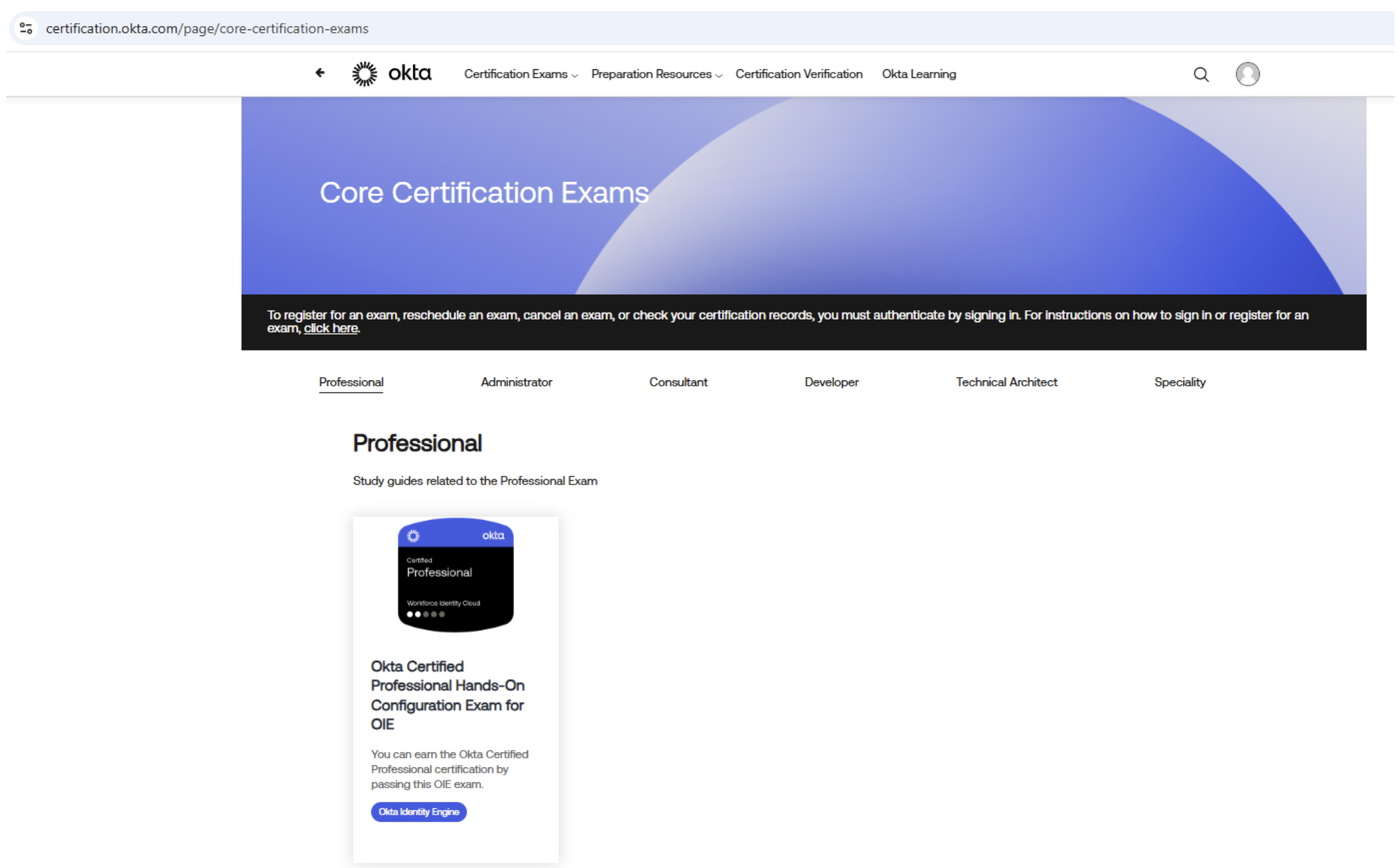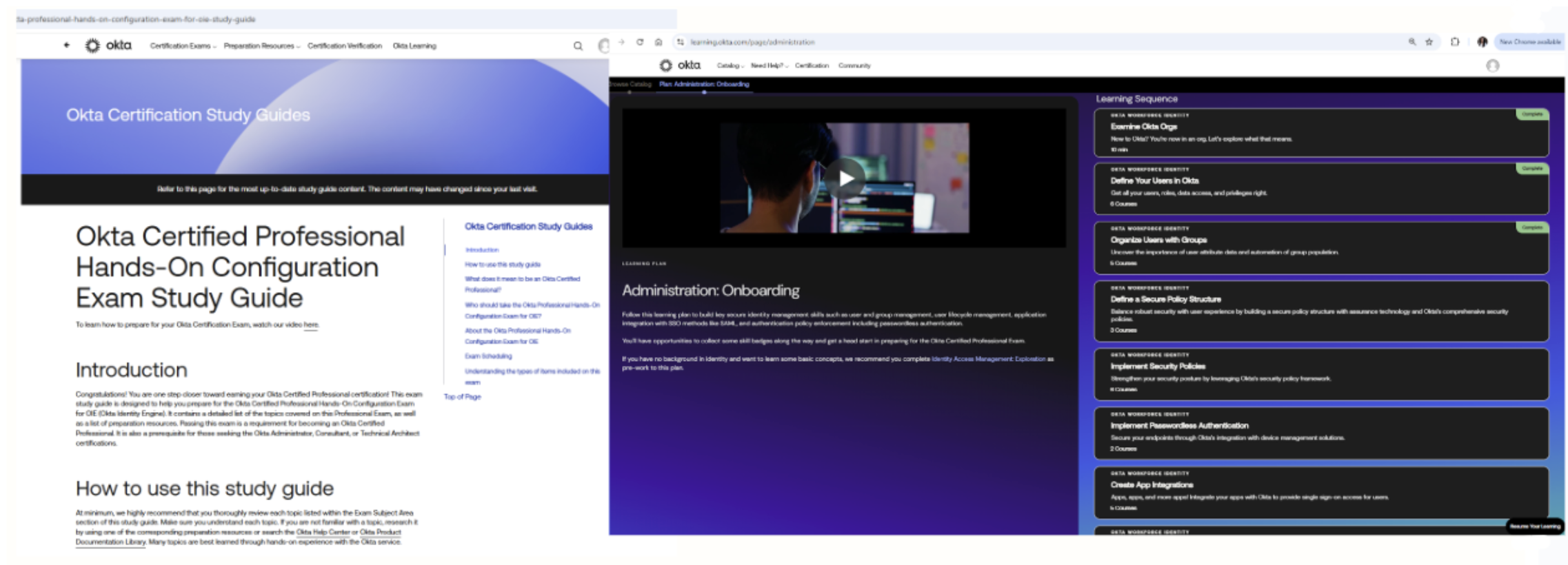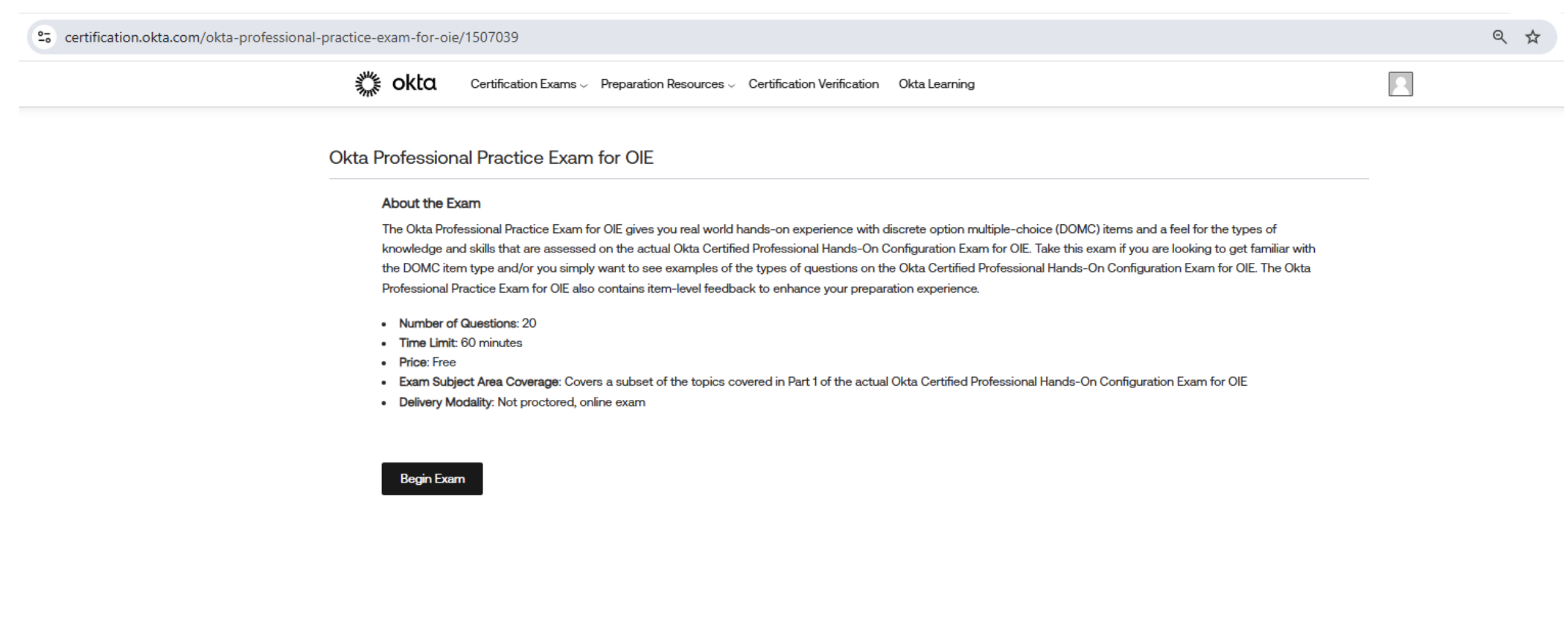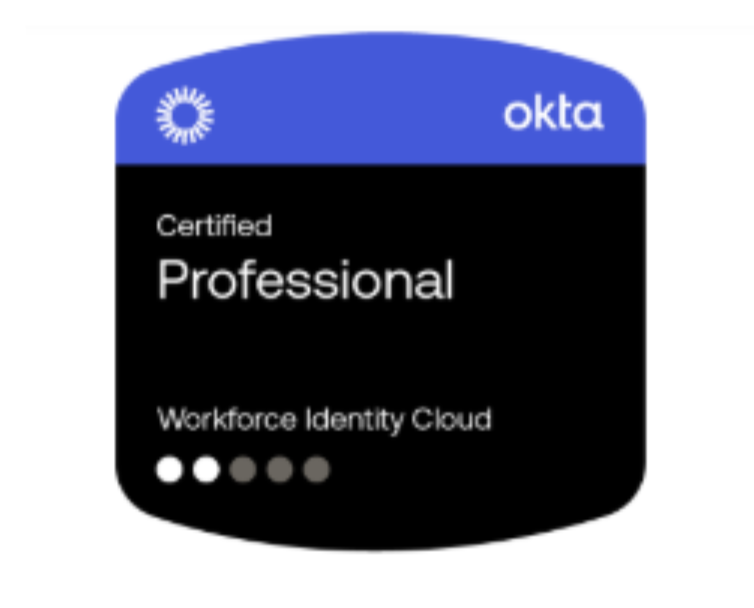I have been at Okta for over a year, and as someone working in identity and access management (IAM), it was time to earn my Okta certification. I knew getting certified would help validate my skills, and to be completely honest, as I started to see all my colleagues get Okta certified, I felt a little FOMO. Here’s a look at my experience — from registration to exam day — and what I learned along the way.

Signing up for Okta Certification
The registration process was straightforward. I visited Okta’s certification website, reviewed the different certification options, and chose the Okta Certified Professional exam, a prerequisite for the Administrator and Consultant exams. As an Okta employee, I already have an account. If your company uses Okta or you’re an Okta partner, you don’t need to create an account to get certified. If you don’t have an existing Okta account, creating one is pretty straightforward, following these instructions
After successfully signing in, you can schedule an exam. Before you do, you should study for the exam and take the free Standard Practice Exam. The exam is made up of two parts, a discrete option multiple choice (DOMC) portion, and a hands-on portion. The free standard practice exam provides DOMC practice only and is intended to help you get familiar with the testing style if you haven’t seen it before. If you want to practice the hands-on element, you may want to prepare by taking the Premier Practice Exam.

Studying for the exam
I started my preparation by reviewing Okta’s official study guide. The guide outlines key topics, including user lifecycle management, SSO, MFA, and troubleshooting. It also pointed out a key bit of information:
- Number and types of questions – Two parts: 15 DOMC, 4 Performance-based use cases.
- Time allotted – Part I: 30 minutes, Part II: 120 minutes
- Exam Fee – $250 ($100 for each subsequent retake)
- Prerequisites – There are no training course prerequisites for this exam. Recommended training and preparation resources are provided in subsequent sections of this document. But they do suggest one year of experience in a technical role working in security and/or identity management, three months of on-the-job experience working with the Okta service, and successful completion of the Administration: Onboarding Learning Plan or equivalent training.
I dedicated a couple of weeks to studying and used the practice test to adjust to the DOMC format and the hands-on portion with the premier practice exam.

Exam-day experience
On the day of the exam, I made sure my setup met the technical requirements—a quiet environment, stable internet, and a functioning webcam. Since it was an online proctored exam, I had to verify my identity and complete a room scan before starting. This requires creating an Examity profile, which has two very important requirements when setting up: a current photo, uploaded before your scheduled testing day, and matching names on your profile and the name on the identification that proctors see before the scheduled exam.
The exam itself was challenging but fair. The questions tested conceptual knowledge and real-world application. Thanks to my hands-on practice, I felt confident navigating these questions.
After completing the exam, I received my provisional result immediately — I passed! It was an exciting moment, knowing that my effort had paid off. A few days later, once the exam cleared Okta Certification’s review, I got my official certification badge and added it to my LinkedIn profile.

Final thoughts
Earning my Okta certification was a rewarding experience that validated my skills and deepened my understanding of IAM. For anyone considering taking the exam, my advice is to take full advantage of Okta’s training and preparation resources, get hands-on experience, and approach the test with confidence.
This certification has already started opening doors for me, and I’m looking forward to applying my knowledge in real-world projects. It’s recognized as a differentiator in the market for employers and employees, and it signals to the industry that security and expertise are foundational to my work. If you’re thinking about getting certified — go for it.






